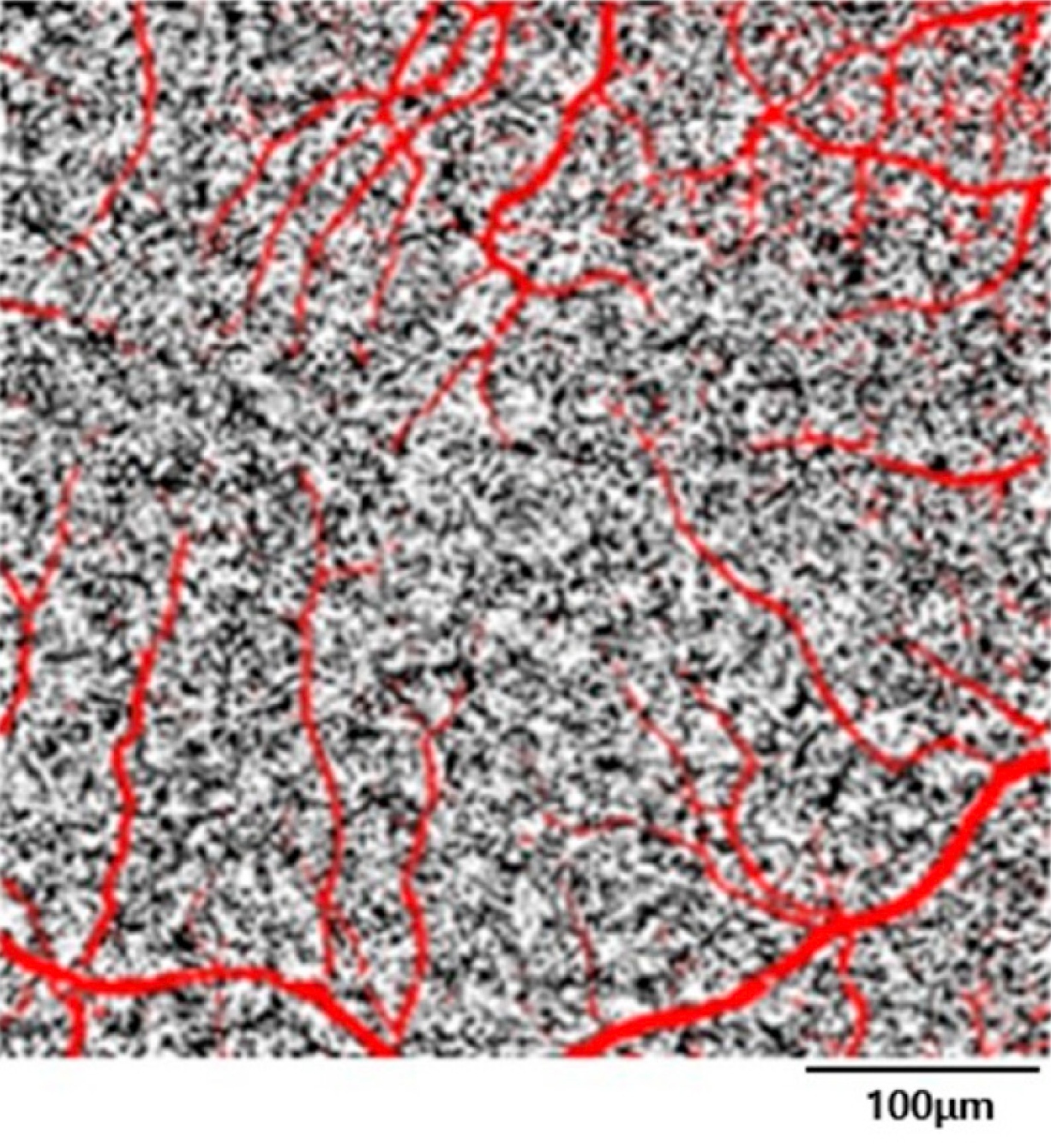 |
| Swept-source OCT-A found that blood flow in the kidneys was positively correlated with peripapillary vessel density and negatively correlated with choriocapillaris flow void density percentage, independent of age and other potential confounding factors. Photo: Kim DS et al. J. Pers. Med. 2022 (12): 839. Click image to enlarge. |
The development of diabetic retinopathy and chronic kidney disease have common pathologies, including changes in microvascular structure and function, as well as altered blood flow regulation mechanisms. Researchers in China decided to evaluate the association between peripapillary microvascular perfusion and renal function in individuals with type 2 diabetes but without diabetic retinopathy. Their findings confirmed a relationship between decreased retinal vessel density and renal dysfunction. In particular, peripapillary vessel density and choriocapillaris flow void density percentage were independently correlated with renal function.
A total of 1,629 patients underwent 6x6mm optical OCT-A centered on the optic nerve head. Swept-source OCT-A assessed the microcirculation parameters peripapillary vessel density in the radial peripapillary capillaries, superficial capillary plexus, deep capillary plexus and a choriocapillaris flow void density percentage.
Compared with individuals without chronic kidney disease, peripapillary vessel density was significantly lower in those in the chronic kidney disease group and worsened as estimated glomerular filtration rate (GFR) declined. GFR is a measure of how much blood passes through the kidneys per minute. Following adjustment for covariates, higher GFR was significantly associated with higher peripapillary vessel density in the radial peripapillary capillaries, in the superficial capillary plexus, in the deep capillary plexus and lower choriocapillaris flow void density percentage in the entire images. After being fully adjusted, the parameters in the inner ring of the radial peripapillary capillaries, deep capillary and choriocapillaris flow void density percentage were significantly associated with microalbuminuria.
“Our study results further support the theory that microvascular screening of ocular [structures] has potential value for detecting microvascular damage in the kidney due to diabetic nephropathy,” the researchers wrote in their paper for Ophthalmology Science. “Further longitudinal studies are needed to clarify the peripapillary vessel changes during chronic kidney disease progression.”
Guo X, Zhu Z, Cheng W, et al. In vivo visualization and quantification of optic disc microvasculature for assessing renal dysfunction. Ophthalmol Sci. July 3, 2023. [Epub ahead of print]. |

